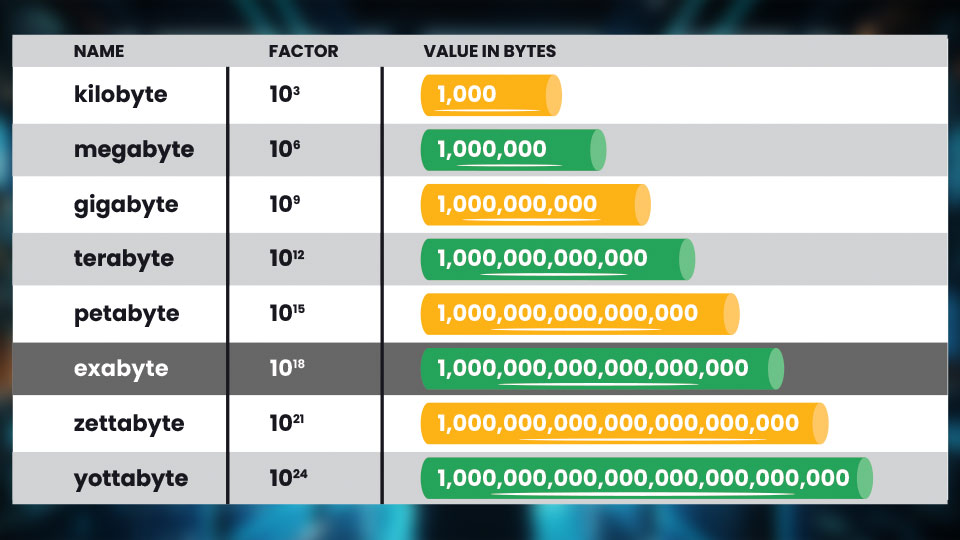
Demand for storage solutions has reached unprecedented heights. And while business is good here in the era of terabytes and petabytes, everyone is looking ahead to the next frontier in data storage: the exabyte.
Growing Storage Needs
In today’s digital age, video content fills every aspect of our lives. Thanks in large part to streaming services and social media, opportunities to consume video content have never been more abundant. And the future promises even more, as immersive experiences like VR and XR continue to gain momentum and video resolutions achieve new highs.
Content creators, media professionals, and enterprises are grappling with a proliferation of media never seen before. So, while today’s media servers can handle current capacity demands, someday, terabytes and petabytes may not be enough.
What Is An Exabyte?
An exabyte is a unit of digital storage typically used to quantify the vast storage capacity of hyperscale data centers, rather than individual servers.
As the world experiences an unprecedented surge in digital data, storage systems may soon confront the challenge of accommodating multiple exabytes of data. It is the natural next step in the international system of units, but just how big is an exabyte?

How Big Is An Exabyte?
One exabyte is equal to one thousand petabytes, one million terabytes, one billion gigabytes, or one quintillion (1018) bytes. Since you’ve probably never counted to a quintillion, let’s put that into perspective.
Visualize a byte as a single character in a book. This paragraph would be about 89 bytes.
A kilobyte (KB) would be a poem with about 1,000 characters. You’ve already read a KB worth of text in this blog post (keep going!), but for the sake of simplicity, let’s say it’s a single page of text.
A megabyte (MB) would be all the text in a 1,000-page book, like “Gone with the Wind” by Margaret Mitchell or “War and Peace” by Leo Tolstoy.
A gigabyte (GB) would equate to all the text in all the books in a small library.
A terabyte (TB) would represent the text stored in all the libraries in California.
A petabyte (PB) would be every letter typed into Wikipedia. In every language.
An exabyte (EB) would be… the internet.
And yes, there’s more. One thousand exabytes is a zettabyte, and one thousand zettabytes is a yottabyte. The scale is truly astronomical—it’s hard to imagine such a massive volume of digital data.

When Will We Need Exabyte Storage?
Does your media team need an exabyte storage solution right now? Probably not. But, maybe sooner than you think.
Some of the largest media and broadcast companies are storing hundreds of petabytes already, so only time will tell when they will cross the threshold into the world of exabyte storage.
On the other hand, smaller production and post-production teams could see their great-great-grandkids graduate college before they even consider exabyte-level capacities.
In conclusion, the exabyte represents a monumental leap forward for the world of data and media storage. And while even the largest media teams are comfortable with terabyte and petabyte storage for now, just as the rise of 8K looks to push 4K out as the new standard, the enormity of exabytes will one day seem like small potatoes.
Whether you’re storing a few terabytes or encroaching on exabyte territory, a powerful and easy-to-use media asset management system is essential for any media storage workflow.
